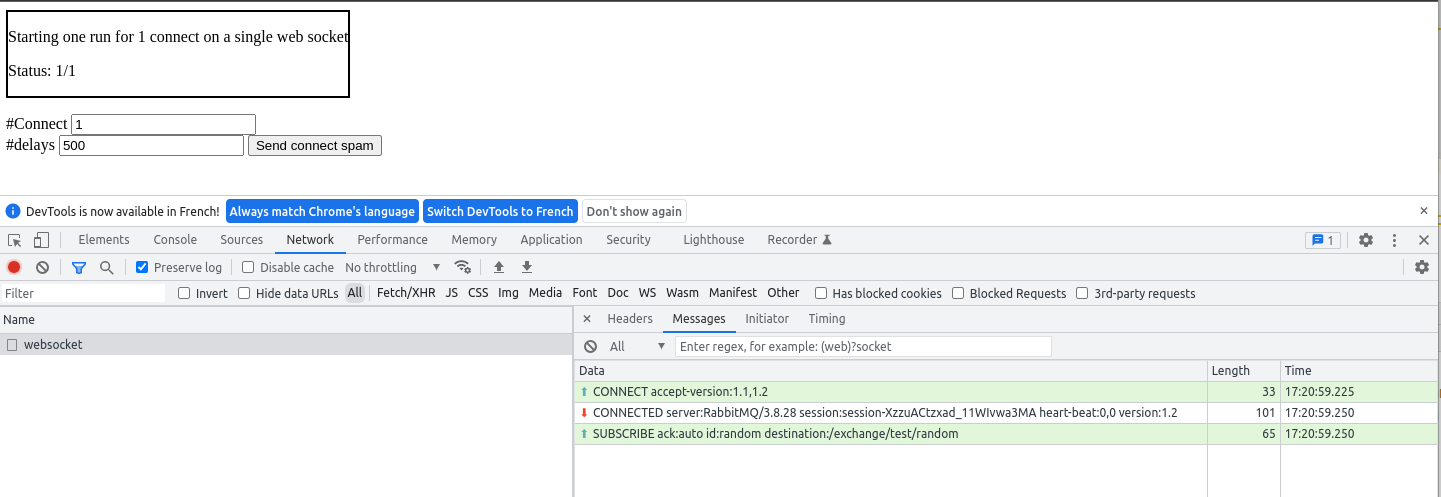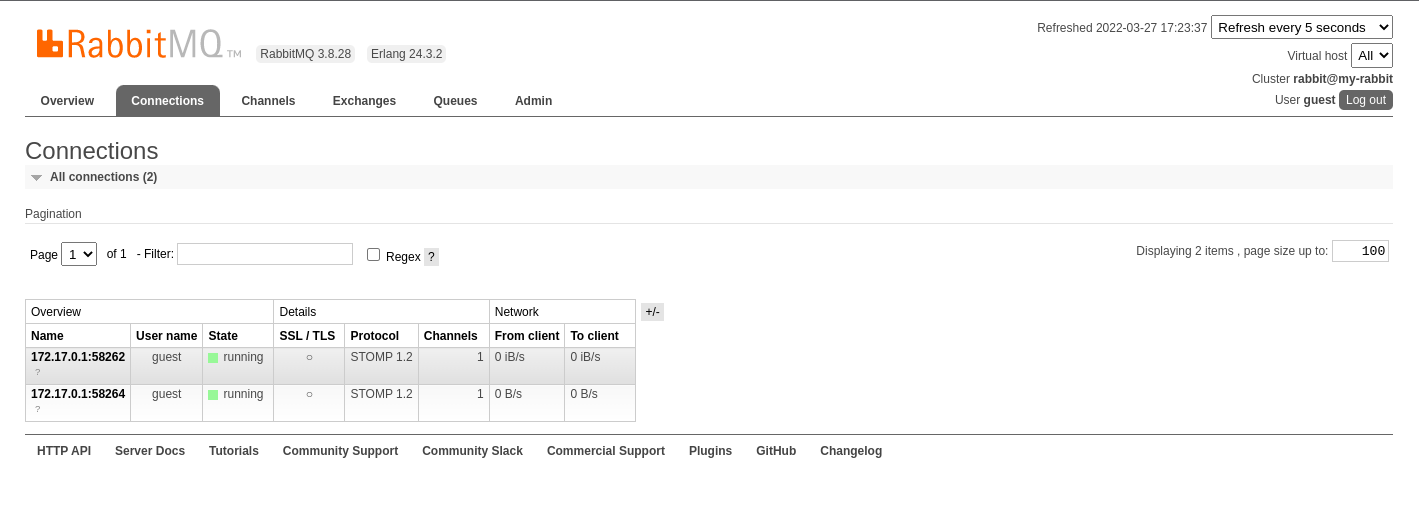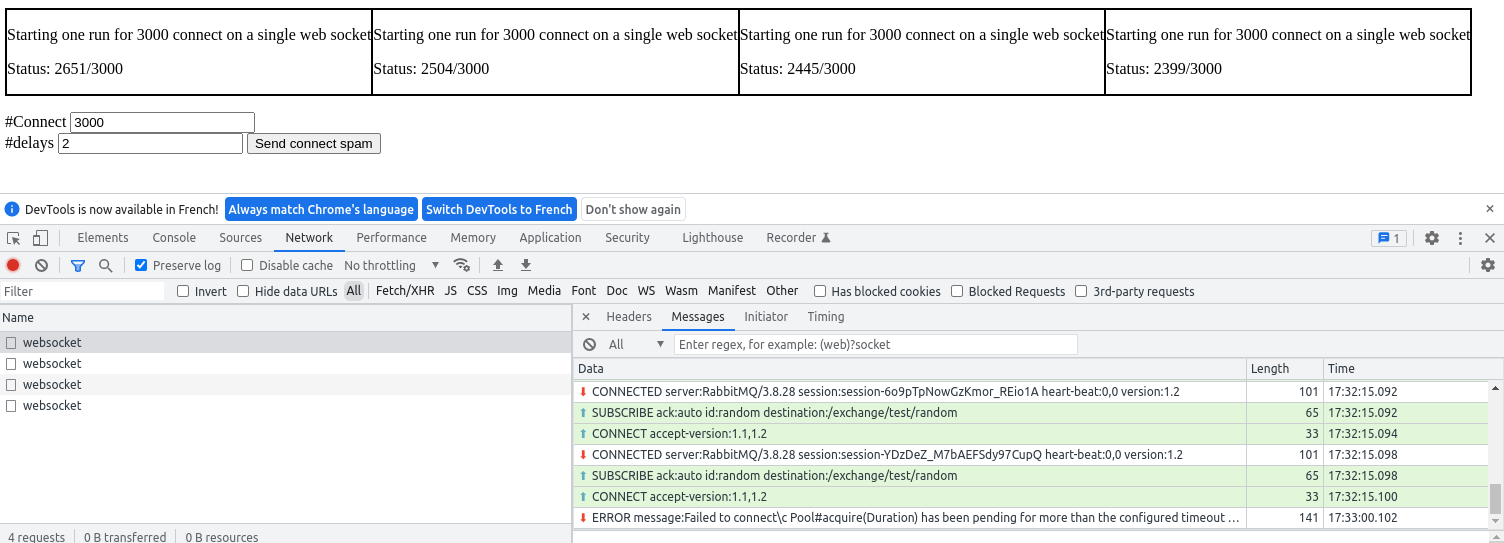DOS attack on Spring’s StompBrokerRelayMessageHandler
Summary
| Discovery Date | 04-2022 |
| Notification date | 11-05-2022 |
| Status | Full disclosure |
| Type | DOS attack |
| Disclose date | 27-09-2022 |
| Public Documentation | CVE-2022-22971 VMWare report |
| Credits | My colleagues at HMS Networks and especially Rémy Vermeiren who helped during analysis |
History of discovery
This bug was discovered during a routine investigation of a bug with my colleagues. After multiple analysis, we came to the conclusion that one of our client application was doing something fishy. We nailed the issue to an error recovery code on the client, made a fix, published the new version and “voilà”. This could have stopped there in lots of company.
But one question remained: how on hell can a buggy client put down ou rest service. Did we do something wrong? The culprit was, you guess it, Spring.
Once identified, team escalated the issue immediately to security manager. A workaround was crafted and a report made for the Spring teams. Communication with VMWare team was quick, polite and very professional. Those guys are used to handling security issue and put the proper priority on fixing it, congrats 👏👏👏.
Now let’s go for the yummy details 🔩.
Overview
In spring Framework, before 5.2.21 and 5.3.19, If you are exposing STOMP websockets using the Spring StompRelayMessageBroker, you are vulnerable to a simple DOS attack. By forcing the StompBrokerRelayMessageHandler to open multiple connections to the backend broker, you create permanent backend connections and sessions which are never reclaimed. In a few seconds, a browser client with little resources can overload your backend and bring it to a halt. The effect of the DOS remain event after the is closed.
It’s important to note that, despite CVE mentioning it requires authentication, it all depends on how you have setup your websocket. If your Websocket doesn’t require authentication (eg it’s a public news or quote api), exploitation of this issue does not require authentication.
Are you vulnerable?
Two key elements must be activated to be vulnerable spring <5.3.20 or <5.2.22:
- You have enabled websocket support in Spring (eg using @EnableWebSocketMessageBroker)
- You have enabled StompBrokerRelay (eg via MessageBrokerRegistry.enableStompBrokerRelay)
Exploit code is published at https://github.com/tchize/CVE-2022-22971 (master branch).
Technicals behind this attack
WebSocket and Stomp protocol
A WebSocket is basically a raw permanent connection between the browser and the client. Any side can send anything inside it. Well nearly anything, the browser still has final word on headers and how to negociate the websocket. And the server obviously has the right to find the behavior inacceptable and close the connection.
Stomp (https://stomp.github.io) is a textual protocol that can sit on top of WebSocket. It define verbs and a way to behave in a message oriented architecture. It’s not limited to websocket, server can implement Stomp directly on top TCP connections for example.
STOMP will basically let you subscribe to Queue, Receive messages and Send them.
The interesting part here is that Stomp has a notion of Session, and that is what is abusable. The STOMP protocol mandates that the client issues a ‘CONNECT’ or a ‘STOMP’ command prior to any SUBSCRIBE operation. To the best of my knowledge, it does not clearly state if multiple CONNECT or STOMP commands are allowed inside a single connection or the expected behavior of server in such condition.
A Gray area in protocol, a security risk for implementation.
Spring Relay implementation
In Spring, the StompBrokerRelay has basically one Job: act as a Relay between the WebSocket and another third party STOMP server in the backend. Messages comes in, get filtered or altered, and pushed on backend. Messages comes from backend and are routed to proper stomp sessions.
The filtering let you add Spring Message interceptors for security, cleaning message, audit logs, restrict user queues access, whatever your business rules require to achieve the features you want to expose.
When you issue a CONNECT or STOMP command, the relay will establish a new TCP connection to the backend STOMP server. It will also generate a new session id that will be used to track that connection and associate it with your WebSocket. If you close the WebSocket or the Session, the TCP connection will be closed too and private queues removed.
Here, the blur around multiple CONNECT appear. One part of the code doesn’t care about the problem and will happily create new TCP connection while the other part assume there can be only one CONNECT and one backend TCP Connection per WebSocket. As a result, when you issue the additional CONNECTs in the same WebSocket session, the existing TCP Connection stays open, but are deferenced and not managed anymore.
How to exploit it
A git is available with all exploit code at https://github.com/tchize/CVE-2022-22971 (master branch).
Setup
Let’s assume you have Spring acting as a STOMP relay to a backend RabbitMQ. Note that this works the same with other STOMP backends. We are going to use some javascript to create CONNECT Messages in loop.
Initial situation is like this. On the browser, we open a single Websocket connection and issue a simple CONNECT

As you can see, on RabbitMQ you find 2 Connections: one for the WebSocket, the other one is the control
connection used internally by the Broker on startup.

Close the browser tab and the delegate connection disappear in RabbitMQ

Flood the system
Using the test javascript, ask the test page to make 3000 CONNECT per websocket
and reduce the delay to 2ms. Open 4 Websocket by clicking 4 times on test button.
After about 20 seconds and 9999 CONNECT requests, the server stops responding.

RabbitMQ show 10000 connections

Spring console show pool exhaustion

Even after closing tab or browser, the connections between Spring and third party STOMP service remain. This mean the adverse party attacking this point does not have to keep the attack running.
Fix
Spring has published an official fix. You can find a sample fixed code at https://github.com/tchize/CVE-2022-22971 (branch upgrade). It shows the behavior of spring after the official fix. You basically get messages in the form
WARN 9234 — [nboundChannel-9] o.s.m.s.s.StompBrokerRelayMessageHandler : Ignoring CONNECT in session c7b7a322-26c6-436e-af15-5c452517fc9c. Already connected.
Workaround
If you can’t upgrade your Spring (seriously? Upgrade it), you can work around the issue by forcing Spring to ignore additional CONNECT on the same WebSocket connection. You can achieve this by using the Spring’s Channel interceptor connected to the InboundChannel. In this interceptor track session ID’s and CONNECT/DISCONNECT to ignore additional CONNECT and not pass them to the StompBrokerRelay. This should not be considered however as a permanent solution.
A sample code is provided in git at https://github.com/tchize/CVE-2022-22971 (branch workaround)